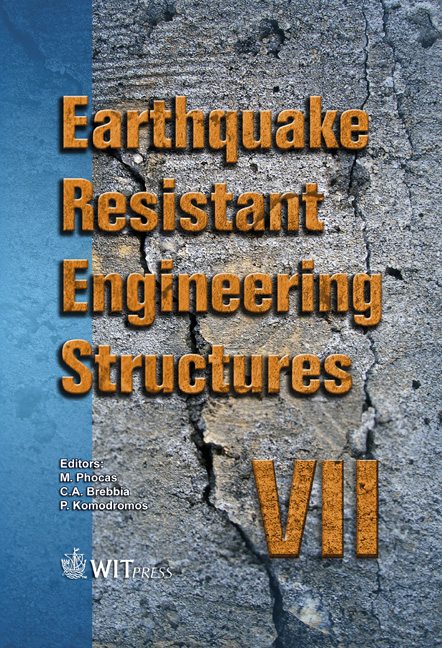Dynamic Analyses Of Adjacent Buildings Connected By Fluid Viscous Dampers
Price
Free (open access)
Transaction
Volume
104
Pages
12
Page Range
139 - 150
Published
2009
Size
447 kb
Paper DOI
10.2495/ERES090131
Copyright
WIT Press
Author(s)
M. E. Uz & M. N. S. Hadi
Abstract
Building structures are often built close to each other because of lack of available land in metropolitan cities. In this study, the effectiveness of fluid viscous dampers is investigated in terms of the reduction of displacement, acceleration and shear force responses of adjacent buildings. The specific objectives of this investigation are carried out in three parts namely: (1) to formulate the equations of motion for the two adjacent buildings connected with viscous dampers; (2) to find out the effectiveness of fluid viscous dampers in consideration of the threedimensional vibration mitigation analysis when the dampers are connected at all the floors, using both a response spectrum analysis and a time-history analysis; and (3) to investigate the optimal placement of the fluid viscous dampers instead of placing them at all the floors in order to minimise the cost of the dampers. Results show that by using fluid dampers to connect the adjacent buildings of different fundamental frequencies can effectively reduce earthquake-induced responses of either building if damper properties are appropriately selected. Analysis results of this study show that placing fluid viscous dampers at selected floors will result in a more efficient structural system to mitigate earthquake effects. Keywords: adjacent buildings, fluid viscous joint dampers, earthquake excitations, time-history analysis, parametric study. 1 Introduction In civil structures, the aim is to protect them from large seismic events through providing redundancies. In recent years, medium and high-rise structures have begun installing control systems, such as passive, active and semiactive devices
Keywords
adjacent buildings, fluid viscous joint dampers, earthquake excitations, time-history analysis, parametric study.





